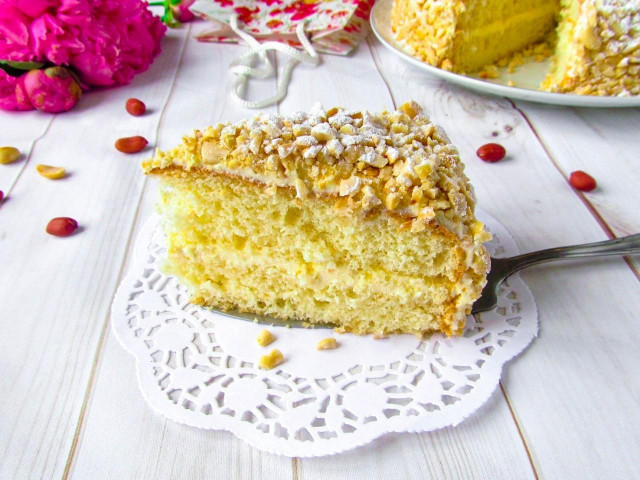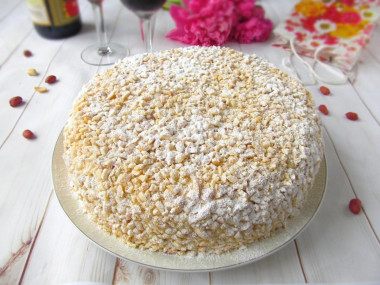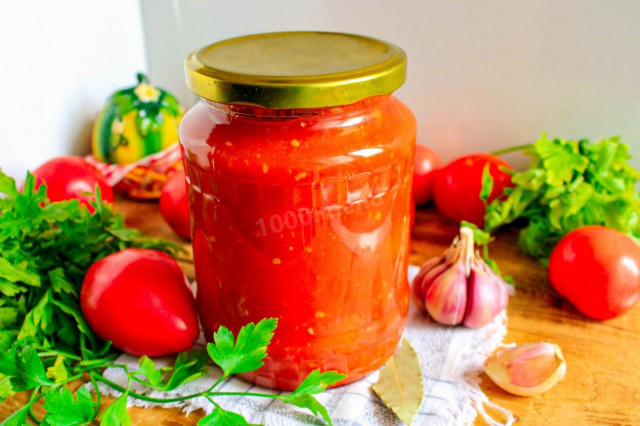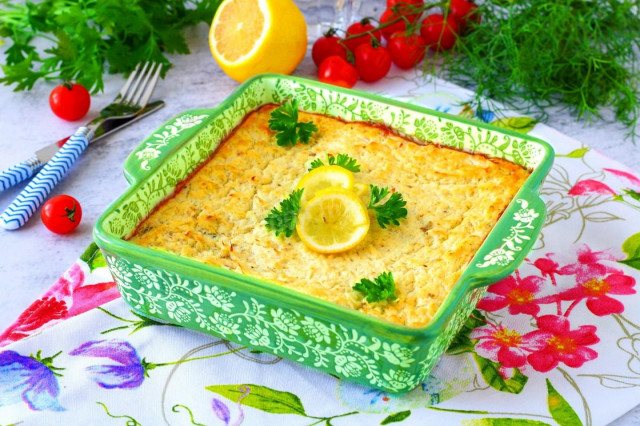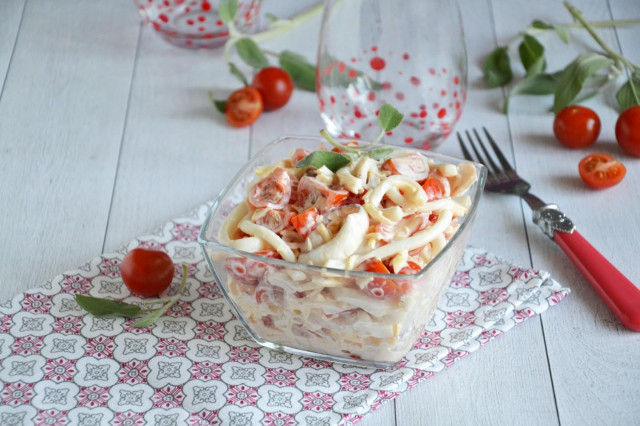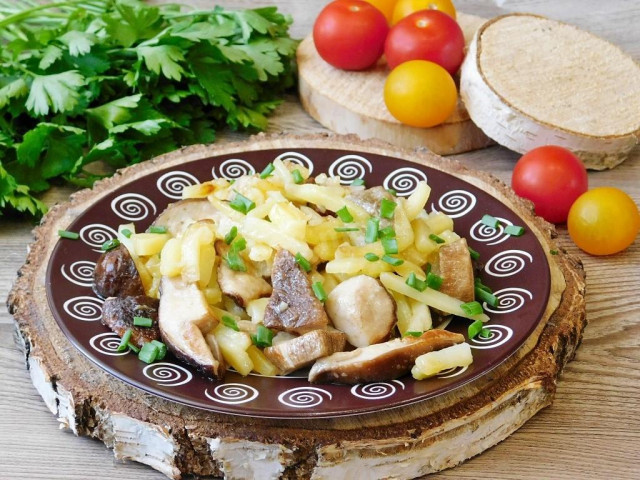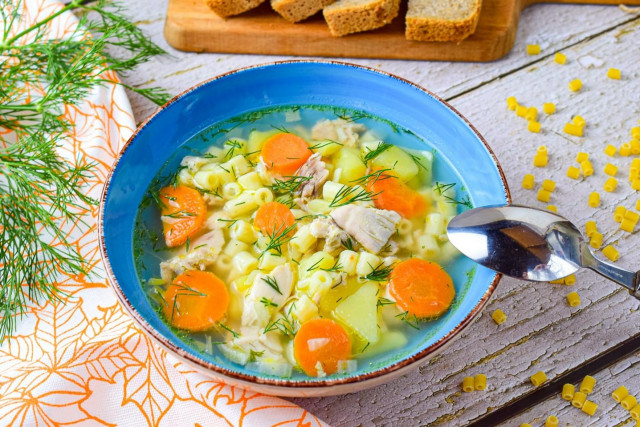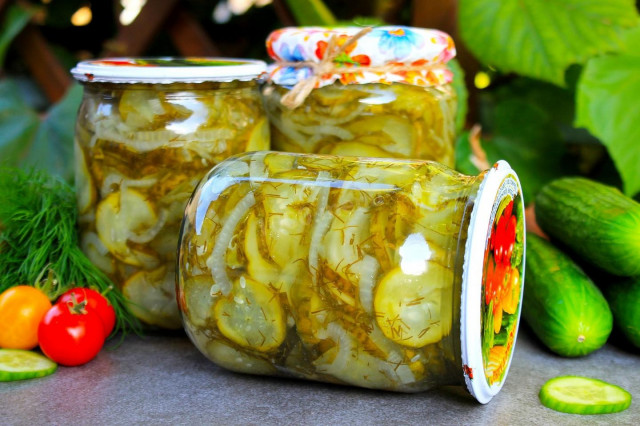Composition / ingredients
Step-by-step cooking
Step 1:
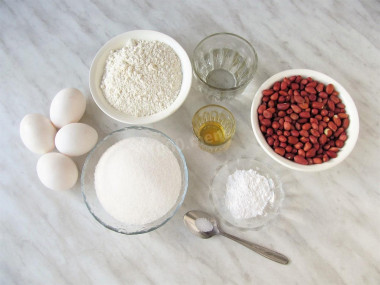
How to make a sponge Gift cake according to GOST? Prepare the products according to the list. Wash the eggs and dry them with napkins. Instead of cognac, you can take rum, liqueur or syrup diluted with vodka. Peanuts are used for sprinkling, so you can replace it with any other nuts. Or use glaze instead of walnut sprinkling - choose what is better for you. However, keep in mind that then you will have another cake)
Step 2:
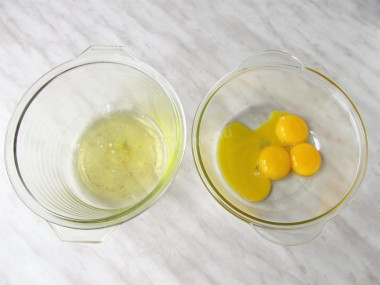
Prepare the products for the classic sponge cake. All of them should be about the same temperature: either cold or warm. I have cold ones. Divide the eggs into whites and yolks.
Step 3:
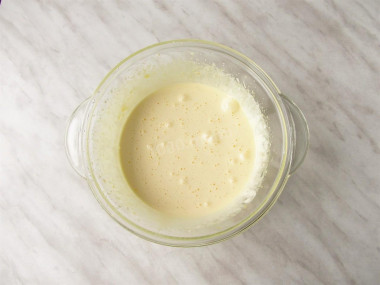
Beat the yolks with half the volume of sugar to a dense yellow mass (beat with a mixer for 5-7 minutes).
Step 4:
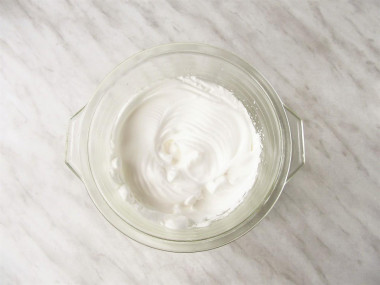
Whisk the whites first on a low speed mixer until soft peaks. Then gradually increase the speed, without stopping whipping, add the remaining sugar in small portions, as well as salt for protein stability. Beat the protein mixture to firm peaks. That is, so that when the dishes are turned over, the proteins remain motionless.
Step 5:
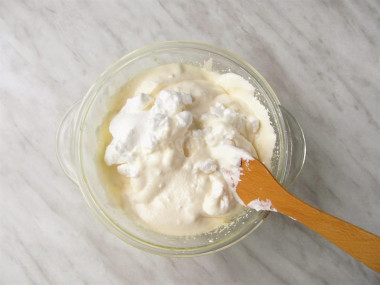
Add the whipped whites to the yolks in parts. With a spatula, mix the egg mixture very gently with movements from top to bottom until an airy fluffy mass is obtained.
Step 6:
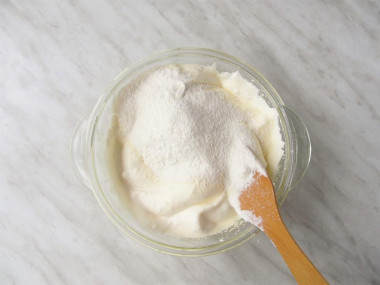
Sift the flour through a sieve. Then add it in parts to the dough, sifting it again through a sieve. Gently mix with smooth movements from top to bottom, saturating the dough with air bubbles. You may have more or less flour, take this into account and look at the consistency of the dough.
Step 7:
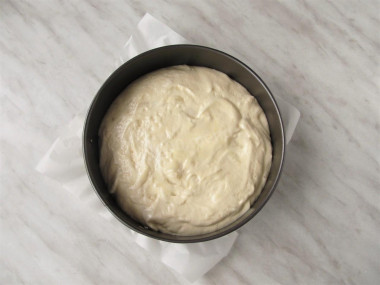
Cover the baking dish with parchment, grease it with vegetable oil. The sides of the mold do not need to be lubricated. The biscuit will rise during baking and "cling" to the edges of the mold. Carefully put the dough into the mold, level the top.
Step 8:
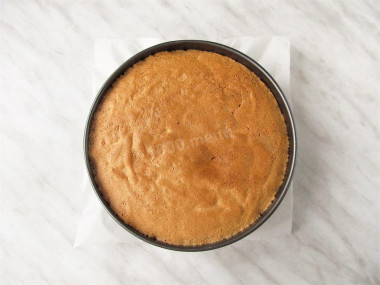
Bake the sponge cake in a preheated 180C oven for 20-35 minutes. You should not open the oven for the first 15-20 minutes, so that the biscuit does not settle. Determine the exact time and temperature of baking according to your oven. Check readiness with a wooden stick. If it comes out dry, then the biscuit is ready. Cool the baked biscuit, remove from the mold. It is best if the biscuit lies for 8-12 hours, during this time it will thicken and will not crumble when cut into cakes.
Step 9:
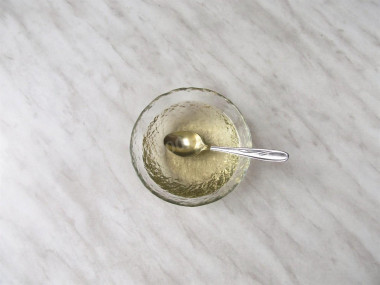
You can prepare the cream and assemble the cake the next day. First prepare the impregnation. To do this, combine water and sugar in a saucepan, mix. Bring to a boil. And when the sugar is completely dissolved, remove from the heat. Cool the syrup, pour in the cognac and mix.
Step 10:
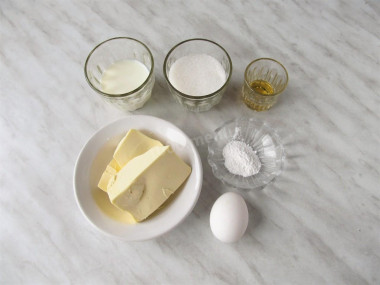
Prepare the products for the cream. Butter should be of good quality. If you don't want to, you don't have to add cognac. Milk can be of any fat content.
Step 11:
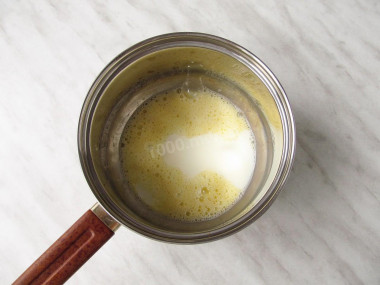
In a saucepan or saucepan, whisk the egg with a whisk, pour in the milk, mix.
Step 12:
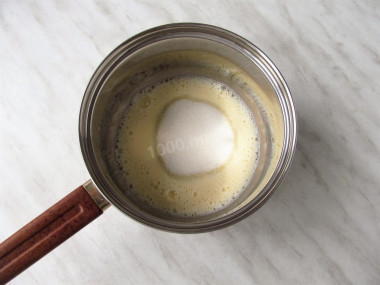
Add sugar to the eggs in a saucepan, mix. Put a saucepan on a slow fire, bring to a boil, stirring constantly so that the egg does not curdle.
Step 13:
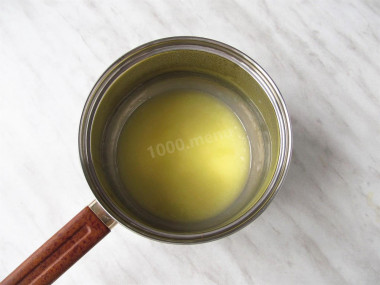
Cook the milk syrup over low heat until thickened (about 5-7 minutes), while stirring. When hot, the syrup looks like condensed milk, when it cools down, it will thicken even more. Pour it into a cup, cover with clingfilm and cool. Then put the syrup in the refrigerator. To prepare the cream, it is very important that the milk syrup is cold, then the cream will turn out lush and stable.
Step 14:
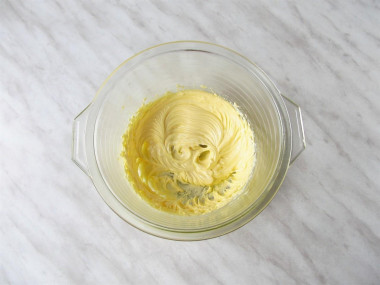
Beat butter at room temperature with a mixer until fluffy with vanilla sugar.
Step 15:
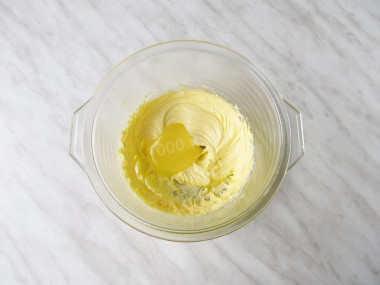
Add a spoonful of chilled milk syrup to the beaten butter, beating the mixture well with a mixer each time. At the end of whipping, pour in the cognac (you can skip it).
Step 16:
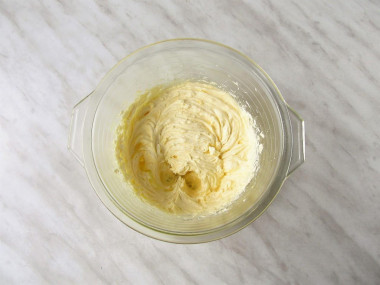
Buttercream is ready!
Step 17:
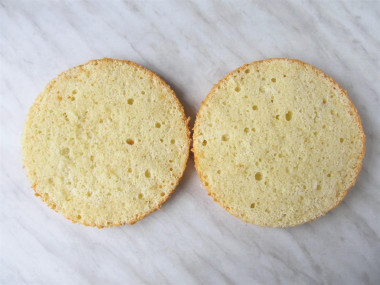
Cut the sponge cake into 2 cakes with a sharp knife. Evenly soak each cake with water mixed with cognac. You can dilute the syrup with water and soak the cakes with this mixture.
Step 18:
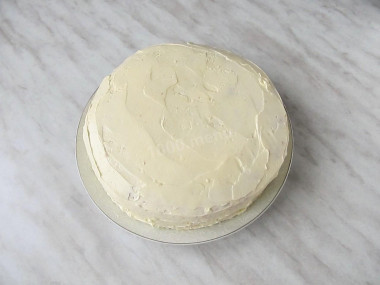
On the bottom cake, apply most of the cream, cover with a second cake, press lightly. Spread the top and sides of the cake evenly with the remaining cream.
Step 19:
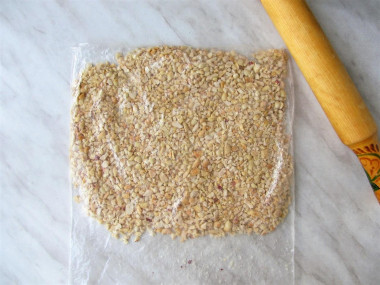
Fry peanuts in a dry frying pan without oil, stirring frequently, until browned. Cool, peel the nuts from the husks. Put the nuts in a tight bag and chop them with a rolling pin not very large, but not small either. Or chop the nuts with a knife.
Step 20:
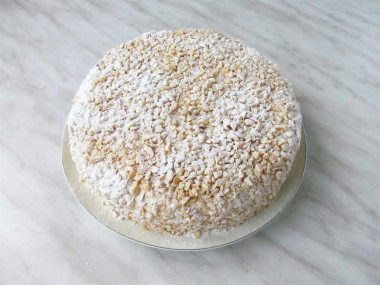
Completely sprinkle the cake with nuts on top and sides. Then sprinkle the cake with powdered sugar through a sieve. Put the finished cake in the refrigerator to cool for 4-5 hours, or overnight. Bon appetit!
Be prepared for the fact that you may need more or less flour than indicated in the recipe. Focus not on the amount of flour, but on the desired consistency of the dough. To avoid mistakes, read about flour and its properties!
Keep in mind that everyone's ovens are different. The temperature and cooking time may differ from those specified in the recipe. To make any baked dish successful, use useful information about the features of ovens !
Caloric content of the products possible in the composition of the dish
- Whole cow's milk - 68 kcal/100g
- Milk 3.5% fat content - 64 kcal/100g
- Milk 3.2% fat content - 60 kcal/100g
- Milk 1.5% fat content - 47 kcal/100g
- Concentrated milk 7.5% fat content - 140 kcal/100g
- Milk 2.5% fat content - 54 kcal/100g
- Chicken egg - 157 kcal/100g
- Egg white - 45 kcal/100g
- Egg powder - 542 kcal/100g
- Egg yolk - 352 kcal/100g
- Ostrich egg - 118 kcal/100g
- Raw peanuts with shell - 564 kcal/100g
- Raw peanuts without shells - 568 kcal/100g
- Boiled peanuts - 376 kcal/100g
- Roasted peanuts with shell - 582 kcal/100g
- Roasted and salted peanuts - 585 kcal/100g
- Peanuts nuts - 568 kcal/100g
- Granulated sugar - 398 kcal/100g
- Sugar - 398 kcal/100g
- Butter 82% - 734 kcal/100g
- Amateur unsalted butter - 709 kcal/100g
- Unsalted peasant butter - 661 kcal/100g
- Peasant salted butter - 652 kcal/100g
- Melted butter - 869 kcal/100g
- Vegetable oil - 873 kcal/100g
- Ordinary cognac "three stars" - 239 kcal/100g
- Cognac - 239 kcal/100g
- Salt - 0 kcal/100g
- Water - 0 kcal/100g
- Wheat flour - 325 kcal/100g
- Powdered sugar - 374 kcal/100g
- Vanilla sugar - 379 kcal/100g

